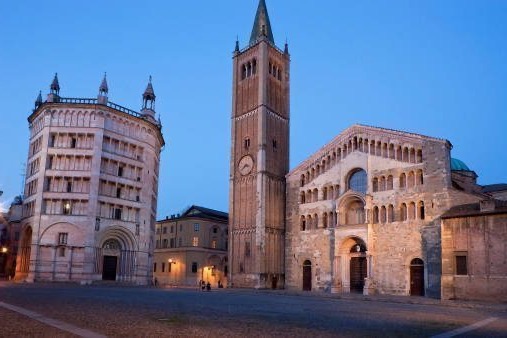Parma, the city of taste and culture, here's what to do one day in the Emilia-Romagna city, where to eat quality and local products and what to see.
Parma is a city ofEmilia Romagna which in recent years has had a considerable increase in visitors attracted by its beauty, its unique monuments and of course the good food. In fact, Emilia is a territory that has always been the cradle of great artistic treasures and gastronomic specialties that the whole world envies us.
Yet Parma is a very important city also from the musical point of view. In fact, there were several theaters, large and small, present in the Ducal city but there are two that today attract attention.

The first is the farnese theater, a completely wooden jewel found in Pilotta palace and which today also includes the National Gallery. Let it be clear that the theater you will see, and which is still used today, is a faithful and meticulous reconstruction of what was partly destroyed and damaged by a bombing during the last world war. However the environment is huge and grandiose, one cannot fail to be impressed. While you're there, visit the National Gallery, but do it in the morning as the rooms on the upper floors are often closed in the afternoon. At least this has happened to me. The costs are low, just 6 euros for the Galleria and Teatro Farnese which become only 3 euros if you visit them after 14pm.

Once you exit the building and then cross the Pilotta gardens towards the historic center on your right you will find the Theatre Royal. We are talking about a true nineteenth-century jewel wanted by the Duchess of Parma Maria Luigia of Habsburg-Lorraine and where over the years the most famous opera singers have performed. In short, there is not only the Scala in Milan or the Fenice in Venice, Parma has a pedigree of the highest level and its opera season is always of great level.
This architectural gem it can hold well over 1200 people and while we were there we took advantage of the guided tour of the theater for only 4 euros. Anecdotes and stories that fill the wait before an opera like the elegant bar next to the foyer.

If, like I did, you will arrive in Parma by car then I recommend the underground car park right near the Pilotta, the Toschi in via IV Novembre. You will have no difficulty in finding a stall and after having gone all the way to the end you will arrive directly at Piazza della Pilotta. Really comfortable.
If you then contact the tourist office directly under the municipality of Parma (Piazza Garibaldi 1) and prove that you have shopped in the center or simply have eaten in one of its restaurants, you will have one discount of EUR 4 for parking at the parking lot.

In my case I chose not to shop but to try a restaurant recommended by a fellow tour guide. Having visited the city in the afternoon, I chose to arrive at the restaurant for lunch. I made a reservation at the tavern Cat Matta (via Borgo degli Studj, 9 / a), something different from the usual clubs.
The tavern is not large, but thanks to the furniture and the impeccable service, one immediately feels at ease. The dishes proposed offer typically Emilian raw materials such as Prosciutto di Parma, Cappelletti and small special features for connoisseurs. It is not to be defined as a low cost place, but what does it matter when you are faced with a plate of anolini in broth of a unique goodness? We chose to taste various dishes such as typical Emilian salami, a Parmesan pudding with glazed shallots and 30-month Parma ham, Pumpkin millefeuille, composed of Tropea onions and goat cheese, Anolini in capon broth, a fillet of venison (delicious) with pear sauce. Indeed, we did not spare ourselves.

What can I say, Parma is a pleasant place and an ideal destination for a romantic or cultural weekend, be it the opera or the artistic one with its theaters, the National Gallery, the Duomo and the Baptistery or the Ducal Palace.


























